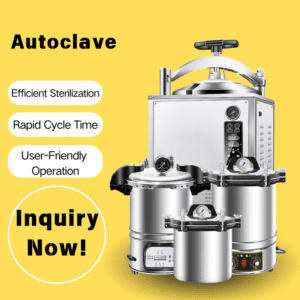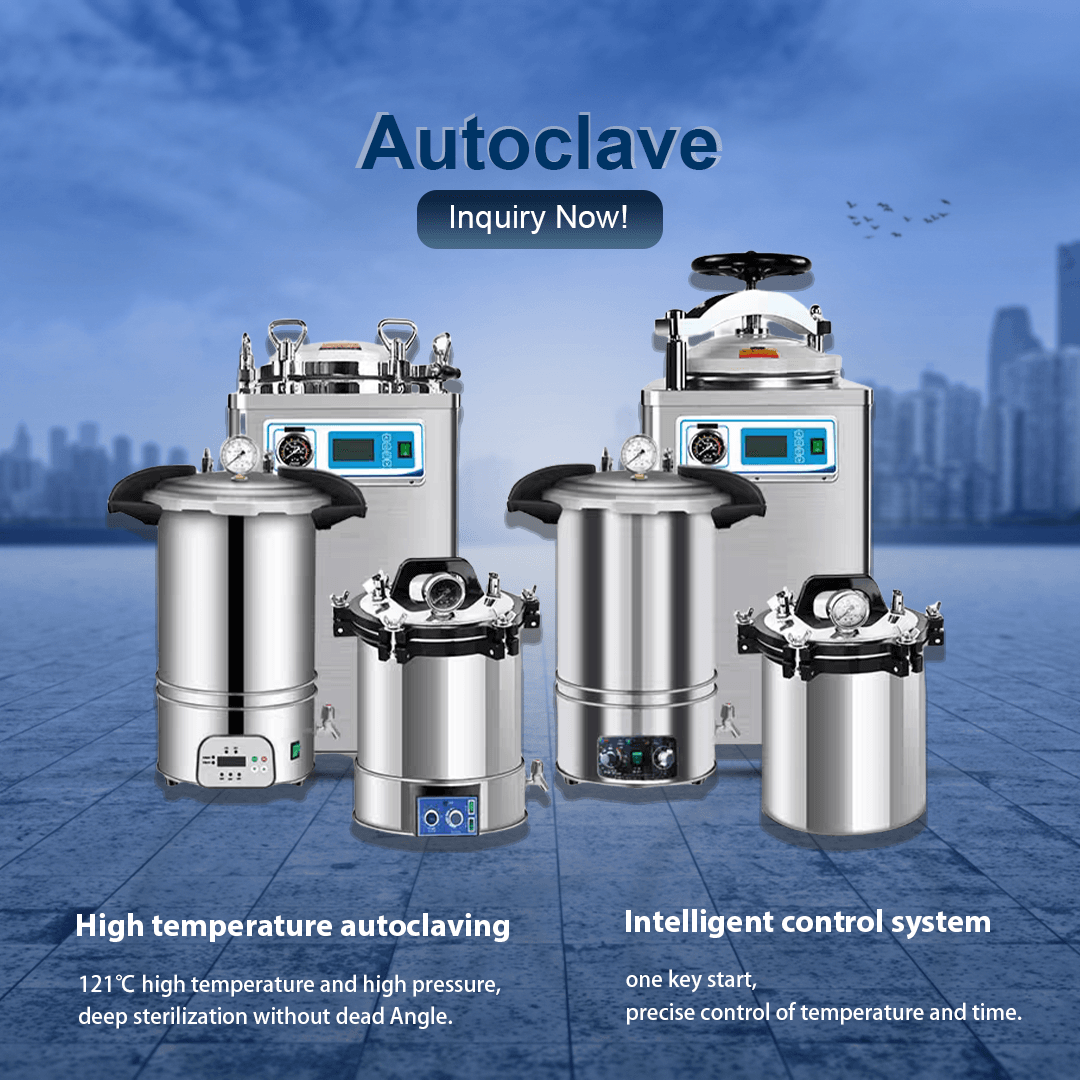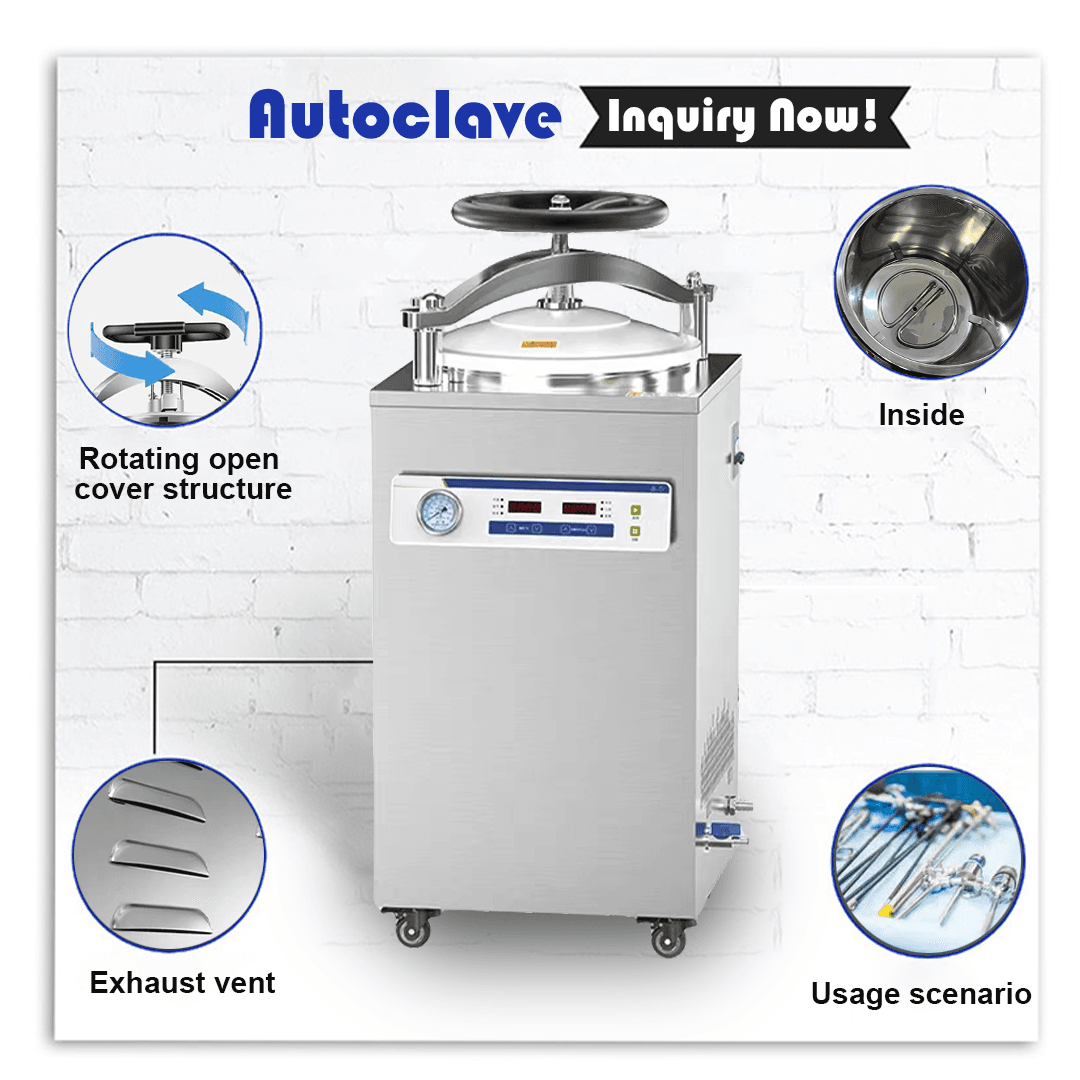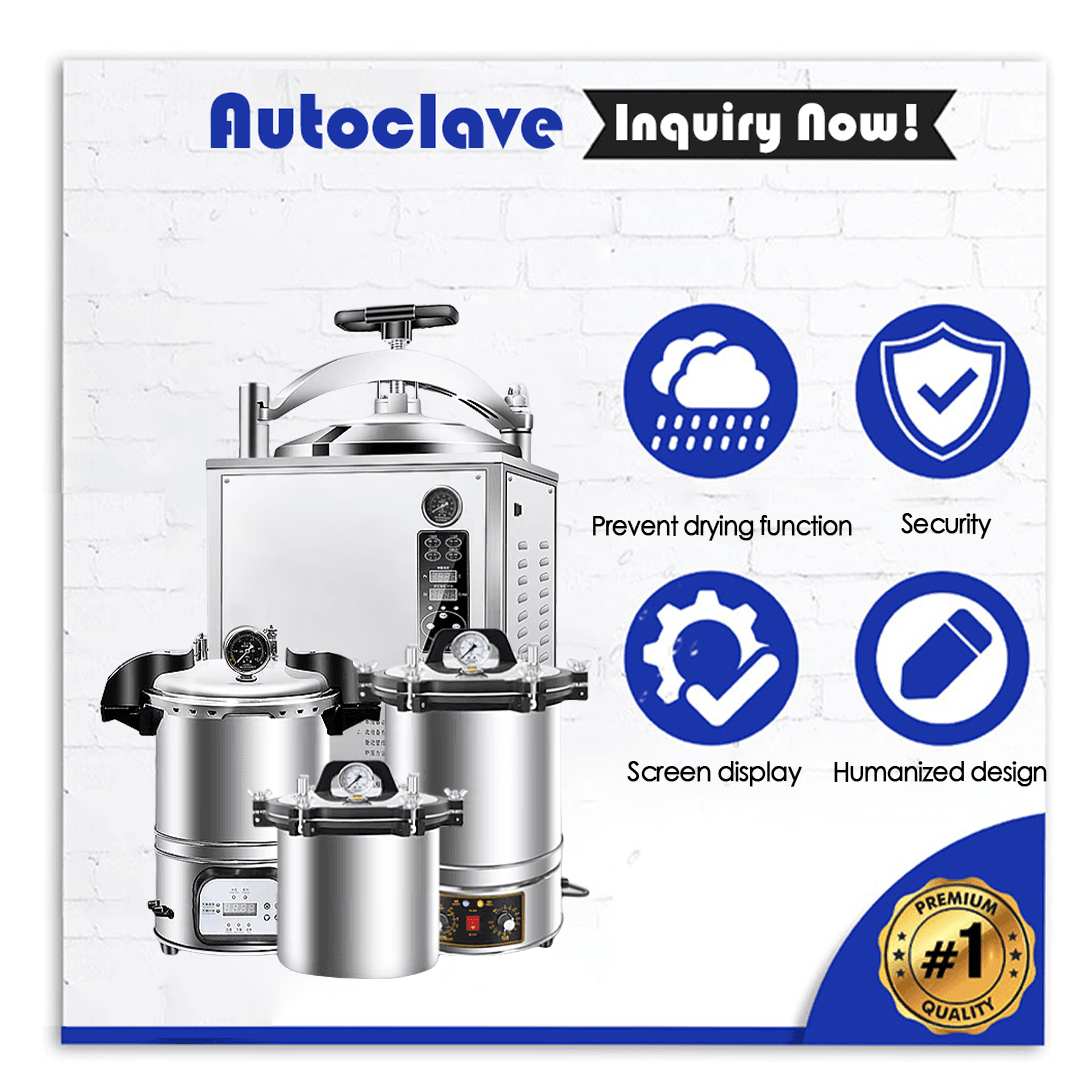
This section covers fundamental information about autoclave machines.
Autoclave machines function as specialized equipment which utilize high-pressure steam to sterilize instruments and materials by eradicating microorganisms including bacteria, viruses, fungi, and even resistant spores. The steam sterilizer plays an essential role in medical facilities, laboratories, and pharmaceutical settings where strict contamination control measures are necessary. Distributors who grasp the primary function of this equipment can effectively communicate its value to customers who depend on sterile tools and materials for their daily operations.
The development of autoclaving originated during the late 19th century in response to the medical and scientific fields’ requirement for better sterilization methods. The technology emerged to protect against surgical infections but has undergone substantial advancements throughout its history. Advanced digital controls alongside automated cycles and enhanced safety components make modern autoclave machines both more efficient and easier to use. By referencing its historical development procurement professionals can demonstrate the technology’s dependable performance and ongoing enhancements to build client confidence in its efficacy.
Multiple essential parts of an autoclave machine function collectively to accomplish sterilization. The main component of an autoclave machine is the chamber made from robust stainless steel which contains the items for sterilization and endures extreme pressure and temperature. The heating system produces steam from water and pressure and temperature sensors keep track of conditions to maintain peak performance. The autoclave machine uses pressure relief valves and secure door seals as safety features to protect users from possible risks. Dealers build client trust in equipment design by outlining its robustness and safety features.
Digital control panels or touchscreen interfaces in modern autoclave machines enable users to choose specific sterilization cycles and monitor progress while troubleshooting issues. The systems deliver precise control and streamlined operation which minimizes human error possibilities. The equipment’s simple features allow distributors to show clients how workflows become more efficient in medical and laboratory settings.
Autoclave machines are available in numerous sizes and designs to accommodate various operational requirements. Benchtop autoclaves fit into limited spaces in small clinics and laboratories while floor-standing units meet the needs of busy hospital sterilization departments. The range of autoclave models provides solutions to meet the needs of all types of operations. Procurement specialists help clients select the right autoclave model according to their operational volume and space constraints to ensure easy integration with current systems.
An autoclave machine operates through moist heat sterilization because steam penetrates materials to destroy microorganisms by denaturing their proteins. The process typically involves several stages: loading, heating, sterilization, and cooling. Once sealed the chamber holds the items while the machine heats water to create steam that reaches a temperature of 121°C (250°F) under 15 psi pressure. The chamber holds this environment steady for an established period of about 15 to 20 minutes to eradicate all resilient pathogens. Dealers should teach clients about the scientific accuracy that allows the sterilization equipment to maintain sterile conditions.
The sterilization process necessitates air removal from the chamber to eliminate cold spots that might allow microorganisms to persist. Autoclave machines achieve uniform steam distribution by utilizing either gravity displacement or pre-vacuum systems. The natural behavior of steam to push out cooler air powers gravity displacement systems but pre-vacuum systems enhance effectiveness for difficult loads by actively removing air before steam introduction. Distributors educate clients about different techniques which enables them to select the equipment that will meet their specific sterilization requirements.
Autoclave machines provide customizable cycles that adapt to different sterilization requirements for solid instruments as well as liquid or wrapped materials. Liquid loads need slower cooling processes to stop boiling over but porous materials need vacuum cycles for effective steam penetration. The equipment’s ability to adapt allows it to serve multiple applications successfully. Through informed guidance procurement professionals help clients select appropriate cycles for their materials which leads to optimal results while protecting items from damage.
The market offers multiple autoclave machine types each engineered for particular uses and settings. The three primary autoclave types include gravity displacement autoclaves for basic solid item sterilization, pre-vacuum autoclaves that perform well with wrapped or porous substances and steam-flush pressure-pulse autoclaves which provide quick cycles suitable for busy high-throughput settings. Research settings utilize special units designed to sterilize both liquid substances and waste materials. Equipment dealers have the ability to customize recommendations based on customer needs so clients invest in autoclaves that match their operational requirements.
Due to their compact size and mobility benchtop autoclave machines are suitable for small facilities that need to sterilize small volumes of equipment. Large-scale autoclave models function to serve central sterilization units in hospitals by processing multiple instruments at once. By understanding these differences distributors can properly match clients with the equipment that fits their spatial limitations and operational workload needs.
Autoclave machines exist in two primary types: manual machines that need user input for settings and cycle monitoring and fully automated units that operate with pre-set parameters and self-check diagnostics. Automated systems minimize error potential and save time which makes them ideal for high-demand operational environments. Procurement specialists demonstrate how automation benefits clients looking for efficiency while positioning these models as essential investments for contemporary facilities.
Autoclave machines serve essential functions in diverse applications because they maintain critical hygiene and safety standards. Medical facilities use sterilization equipment to clean surgical tools and bandages alongside other reusable items to prevent infection during medical procedures. Laboratories use autoclave machines to prepare glassware, culture media, and pipette tips without contamination for precise experimental results. Dental practices utilize them to sterilize instruments while pharmaceutical environments deploy them for processing equipment and packaging tasks. To serve specific client groups effectively distributors need to understand how these applications work so they can provide customized solutions that solve unique industry challenges.
Autoclave machines serve as essential tools in preventing infections by sterilizing reusable equipment. Ensuring reusable items remain pathogen-free through sterilization methods greatly diminishes healthcare-associated infection risks which pose serious dangers to both patients and facilities. The equipment serves as fundamental patient safety equipment for dealers to market to clients who value high standards of care.
Experimental results in research settings become unreliable when contamination occurs because it generates inaccurate data and leads to resource wastage. Using autoclave machines allows for dependable sterilization of scientific tools and materials which protects the validity of scientific research. Laboratory clients should understand the procurement professionals’ emphasis on how the equipment upholds their standards for precision and credibility.
Because they demonstrate superior performance capabilities compared to other sterilization techniques autoclave machines stand out as the preferred choice across multiple settings. Autoclave machines produce superior sterility conditions because they can destroy even the toughest microorganisms which traditional boiling or chemical disinfection methods cannot eliminate. Autoclave machines avoid environmental harm because they use steam instead of harmful chemicals that need special disposal methods. Implementing this system helps to reduce expenses by allowing repeated use of equipment and materials which diminishes reliance on single-use products. Vendors should explain these advantages to their clients to demonstrate the lasting benefits of using this technology.
Autoclave machines enable high-volume settings like hospitals to achieve operational efficiency through their rapid processing of large batch sizes. The scalable nature of autoclave machines enables them to support both compact medical practices and expansive medical institutions. Dealers should demonstrate to clients running busy operations how this equipment maintains productivity while maintaining safety standards.
Autoclave machines can process various materials simultaneously such as metal tools and glassware as well as fabrics and specific heat-resistant plastics unlike other methods which can only work with particular materials. The equipment’s flexible capabilities consolidate workflows by reducing system redundancy. Through education on material compatibility and cycle adjustments procurement specialists guide clients to process various loads safely and effectively.
Autoclave machines demonstrate effectiveness yet possess inherent limitations that need attention. These autoclave machines demand a stable power source and water availability to produce steam which poses difficulties in remote or resource-constrained locations. Heat-sensitive materials such as some plastics and electronics are prone to damage because they cannot endure the autoclave’s high heat and pressure. Scheduled upkeep helps avoid problems such as leaks and efficiency loss from deteriorating parts. Distributors guide clients by recommending models that incorporate energy-saving features or backup systems which enable dependable performance across different operating conditions.
Personnel safety requires strict procedures when operating autoclave machines because these devices produce extreme temperatures and pressures. Staff members need training to handle items properly while loading and unloading, prevent chamber access during operation and use protective equipment when touching hot materials. Dealers offer training materials and safety instructions that help clients create safe operational procedures and reduce risk factors in their facilities.
The consistent performance and prevention of breakdowns rely heavily on routine maintenance procedures like chamber cleaning and sensor calibration along with seal inspection. Through maintenance plans and service contracts procurement professionals enable their clients to prolong equipment lifespan while preventing expensive operational halts from unforeseen breakdowns.
Medical equipment distributors and procurement specialists working in healthcare and laboratory settings need to understand autoclave machines since they are essential for sterilization. The device operates with high-pressure steam to destroy dangerous microorganisms which guarantees operational safety and compliance while improving efficiency in essential procedures. Its multifunctionality and dependability alongside its advantages make the autoclave machine an indispensable device for preventing infections and ensuring precise research results which establishes it as a fundamental element in contemporary medical and scientific operations. This knowledge enables you to expertly recommend appropriate sterilization solutions for your clients while establishing yourself as a reliable industry advisor. Should you need information about autoclave machines or want to find superior equipment for your clients please contact us. Contact us via [inquiry@shkeling.com](mailto: You can send an email to inquiry@shkeling.com or use our WhatsApp contact at +8618221822482 to get in touch or visit our website at https://autoclaveequipment.com to learn about our products. Our purpose is to help you reach your business targets while providing healthcare providers with safe solutions through innovative approaches.
1. What is an autoclave machine used for? The machine sterilizes medical equipment and materials by destroying microorganisms using high-pressure steam which maintains safety standards in healthcare and scientific laboratories.
2. How does an autoclave machine achieve sterilization? This machine produces steam at high temperatures (121°C) and pressure to destroy bacteria, viruses, fungi, and spores by penetrating items effectively.
3. The autoclave machine can sterilize heat-resistant items such as metal tools, glassware, fabrics, and some types of plastics. The autoclave machine sterilizes heat-resistant materials such as metal tools, glassware, fabrics, and specific plastics based on their heat and pressure tolerance.
4. The autoclave machine plays an essential role in infection control because it eliminates pathogens from reusable items to protect both patients and clinical staff. The autoclave machine defends against healthcare-associated infections by sterilizing reusable items to eliminate pathogens and safeguard clinical staff and patients.
5. An autoclave machine requires electricity and water to operate and cannot sterilize materials that cannot withstand high temperatures. The autoclave machine needs constant power and water supply while being unable to sterilize materials sensitive to heat and demands regular maintenance to ensure proper functioning and safety.
6. Distributors can offer clients training programs for autoclave operation along with maintenance support and customized equipment suggestions to enhance sterilization procedures and adhere to regulatory standards. Through training and maintenance support together with specialized equipment suggestions distributors help clients to enhance their sterilization procedures while maintaining regulatory standards.

يجب أن تلتزم مرافق الرعاية الصحية بمعايير النظافة والتعقيم الصارمة دون استثناء. يجب على موزعي المعدات الطبية وأخصائيي المشتريات فهم الأدوات التي تحافظ على المعايير لتقديم قيمة للرعاية الصحية

تمثل صيانة الأدوات والمعدات الطبية المعقمة أهم ممارسة للوقاية من العدوى وضمان سلامة المرضى في أماكن الرعاية الصحية. موزعو المعدات الطبية إلى جانب التجار والمشتريات

يعمل قطاع الرعاية الصحية سريع الوتيرة في ظل لوائح صارمة تتطلب أن تكون صيانة التعقيم هي الشغل الشاغل لحماية سلامة المرضى وضمان الامتثال للمعايير التشغيلية. المعدات الطبية

تعمل معدات التعقيم كأداة أساسية في أماكن الرعاية الصحية للحفاظ على معايير النظافة وحماية المرضى. يحتاج موزعو المعدات الطبية إلى جانب التجار والمتخصصين في المشتريات إلى معرفة

تعمل أجهزة الأوتوكلاف كمكونات أساسية لعمليات التعقيم في مرافق الرعاية الصحية من خلال البخار عالي الضغط لتدمير مسببات الأمراض على الأدوات الطبية والمواد الأخرى. يجب على موزعي المعدات الطبية وأخصائيي المشتريات

يجب أن تعطي بيئات الرعاية الصحية الأولوية للتعقيم لأنه يحمي المرضى والموظفين من خلال إزالة مسببات الأمراض المعدية من الأجهزة والمواد الطبية. يبرز الأوتوكلاف كواحد من أفضل الأدوات